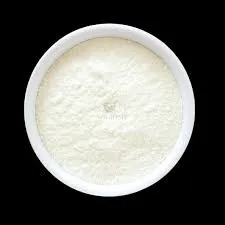
Dec . 11, 2024 12:14 Back to list
hpmc gel preparation
HPMC Gel Preparation A Comprehensive Guide
Hydroxypropyl methylcellulose (HPMC) is a widely used polymer in pharmaceutical, food, and cosmetic formulations, primarily due to its excellent gelling, thickening, and film-forming properties. Its applications range from drug delivery systems to the stabilization of emulsions, making it a versatile ingredient in various industries. This article will guide you through the steps of preparing HPMC gel, including its benefits and common applications.
Understanding HPMC
HPMC is a semi-synthetic derivative of cellulose that is soluble in both hot and cold water. The polymer's unique characteristics, such as its non-toxic nature and ability to form clear gels, make it suitable for a variety of formulations. HPMC gels are widely used in pharmaceutical formulations for controlled drug release, in cosmetics for moisturizing and skin protection, and in food products as thickening agents.
Materials Needed
To prepare an HPMC gel, you will need the following materials
1. HPMC Powder Choose the desired viscosity grade depending on the intended application. 2. Distilled Water Ensures purity and avoids any impurities that could affect the gel. 3. Stirring Equipment Magnetic stirrer or overhead stirrer to achieve uniform mixing. 4. Heat Source If necessary, to facilitate dissolution. 5. pH Meter To monitor and adjust the pH if required for your formulation.
Step-by-Step Preparation
Step 1 Measure HPMC and Water
Calculate the desired concentration of HPMC based on your formulation requirements. For example, a common concentration is between 1-5% w/v. Measure the appropriate amount of distilled water, which will act as the solvent for the gel.
Step 2 Hydration of HPMC
hpmc gel preparation

To prevent clumping, slowly sprinkle the HPMC powder into the water while stirring continuously. This helps to ensure that the particles are adequately hydrated and dispersed. It is crucial to avoid adding HPMC too quickly as it can lead to the formation of lumps.
Step 3 Dissolving HPMC
Once all the HPMC has been added, continue stirring for about 20-30 minutes, or until the powder has completely dissolved. If necessary, gently heat the mixture to about 60-70°C to assist the dissolution process. However, be careful not to exceed this temperature for prolonged periods as it could alter the properties of HPMC.
Step 4 Cooling and Adjusting pH
Allow the gel to cool to room temperature while continuing to stir. If your formulation requires specific pH adjustments, use a pH meter to monitor the gel's acidity or alkalinity. You can adjust the pH by adding small amounts of citric acid or sodium hydroxide, depending on whether you need to lower or raise the pH.
Step 5 Finalization
Once the gel has cooled and the pH is adjusted, transfer it to a suitable container for storage or further processing. The HPMC gel can now be used as a base for various formulations, including creams, ointments, and topical applications.
Applications of HPMC Gel
HPMC gel has diverse applications across multiple industries. In the pharmaceutical sector, it is utilized in controlled-release formulations and topical preparations. In cosmetics, it serves as a moisturizer and stabilizer in skin creams. Furthermore, it is also used in food products as a thickener and texturizing agent.
Conclusion
Preparing HPMC gel is a straightforward process that can be tailored to various applications across different industries. The versatility of HPMC as a gelling agent makes it an invaluable component in modern formulations. By following the outlined steps, you can successfully prepare HPMC gel to meet specific formulation needs, contributing to advancements in health, beauty, and food industries.
-
Unlocking the Benefits of HPMC Products: A Gateway to Versatile Applications
NewsAug.07,2025
-
Unleashing the Potential of HPMC Ashland: A Comprehensive Look
NewsAug.07,2025
-
Tile Bonding Cellulose: The Key to Superior Adhesion and Durability
NewsAug.07,2025
-
Hydroxypropyl Methylcellulose Powder: The Versatile Component in Modern Pharmaceuticals
NewsAug.07,2025
-
Hydroxyethyl Cellulose: The Versatile Solution for Various Industries
NewsAug.07,2025
-
Hydroxyethyl Cellulose (HEC): The Versatile Polymer for Various Applications
NewsAug.07,2025







